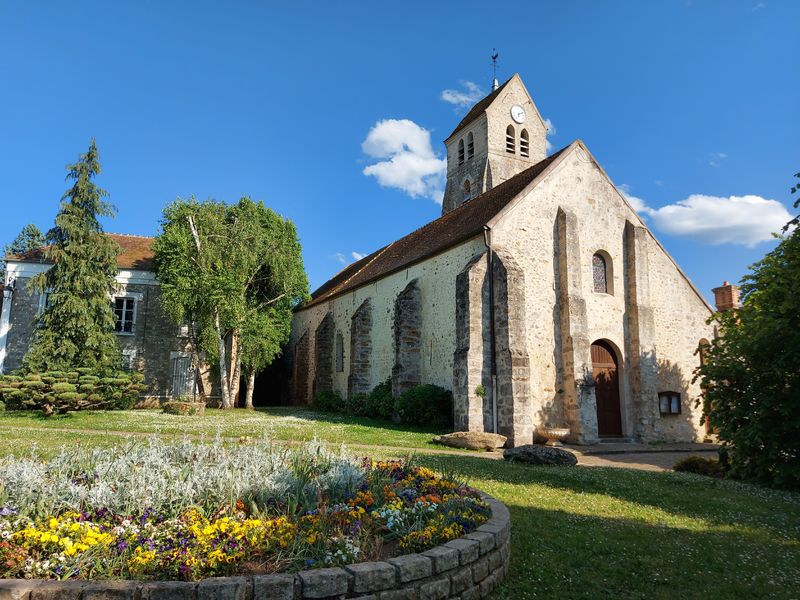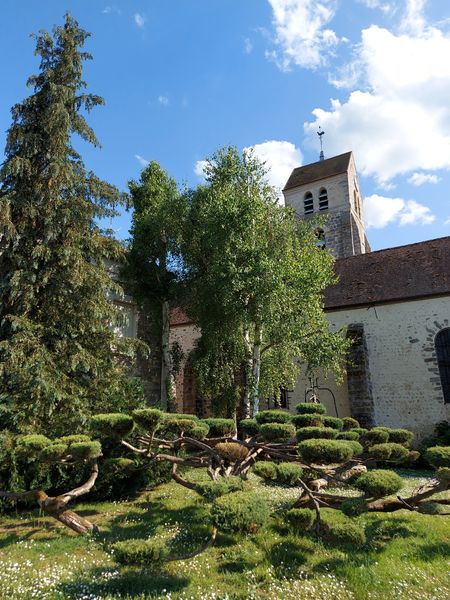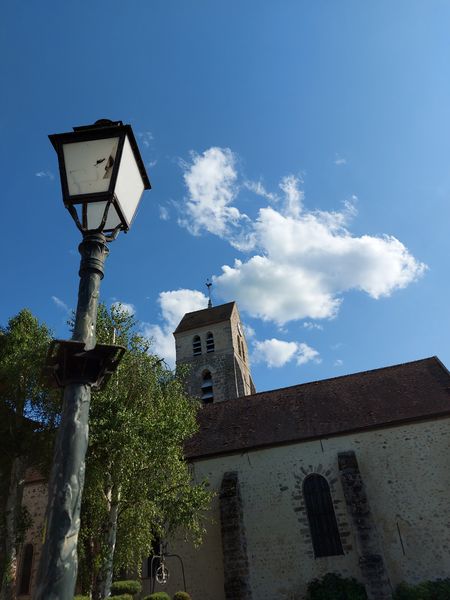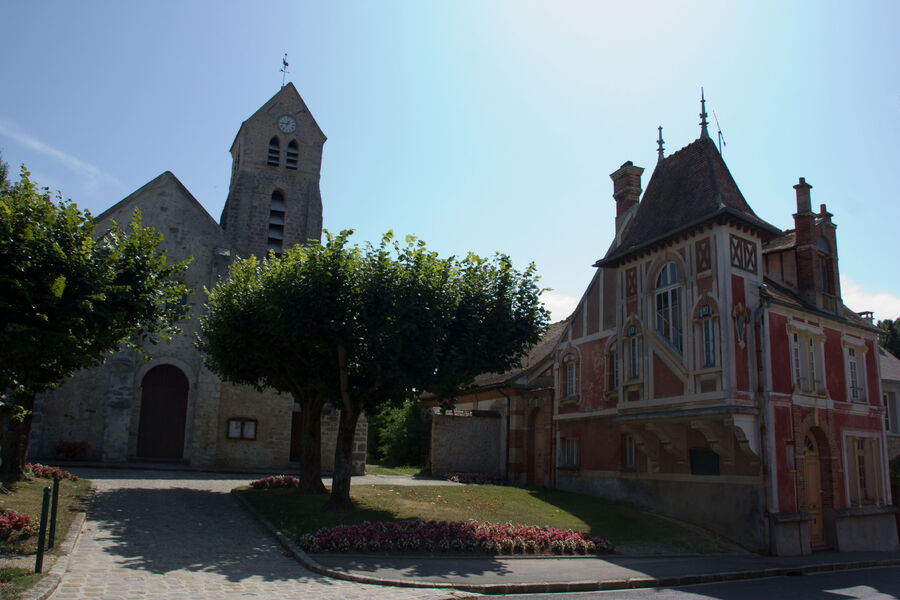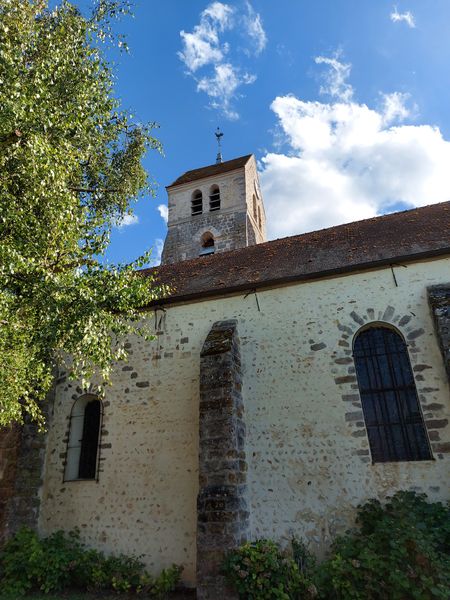Eglise Saint-Aignan
Soisy-sur-École
Patrimoine culturel
Different centuries are mixing inside the church of Soisy, which gives it an unique aura of history that guides us throughout the ages.
Soisy became a parish in 984. An expertise of the framework allowed us to identify that the church was built during the 12th century. A beam located at the entry of the church has an inscription on it dating it from 1116. The spans of the nave, of the aisle and of the bell tower are all from 1150. The keystones are adorned with fleurs-de-lys. To sum up, we can easily see that the church has three distinctive parts : the Roman choir, its spans and the framework from the 12th century, the bell tower and its two-sloped roof from the 13th century and finally the nave from the end of the 15th century.
The nave and the South side aisle are from the 15th century and were built to extend the church. In 1830, the bell tower and part of the roof were elevated. The contrast between the older choir and the nave is specific from the Gâtinais’ churches. This explains why the roof is not symmetrical.
Its Western facade has buttresses typical from the Renaissance. A small portal is located on the aisle and still has its original lock and forged key.
The church of Soisy has been classified as part of the Monuments Historiques since 1989. A lot of furniture and paintings are classified too. Some tombstones can be seen against a choir’s wall. One is from 1327 and was made for Jehan Vaudoué and his wife Marguerite. The grave is finely engraved and detailed. The couple is represented while praying, surrounded by arches and captions. The couple was surely important for the royal domain.
The church of Soisy-sur-École is dedicated to Saint-Aignan (Saint Aignan), the patron saint of Orléans. He was born in Vienne, in France during the 4th century. He is mostly known for being the bishop of Orléans during the invasion of the Huns and he saved the city from being destroyed. He organized the defence of the city and had the courage to ask for help from a Roman general. After the escape of the Huns, the bishop decided to go up a tower of Orléans everyday for the rest of his life in order to check if the city could be attacked again or not. His remains are in the crypt of the collegiale Saint-Aignan in Orléans.
SOURCE: Mairie de Soisy-sur-École, “Le Patrimoine Religieux de Milly-la-Forêt et de la Communauté de Communes des 2 Vallées” des Amis de Milly-en-Gâtinais et Environs, Parc Naturel Régional du Gâtinais Français
The nave and the South side aisle are from the 15th century and were built to extend the church. In 1830, the bell tower and part of the roof were elevated. The contrast between the older choir and the nave is specific from the Gâtinais’ churches. This explains why the roof is not symmetrical.
Its Western facade has buttresses typical from the Renaissance. A small portal is located on the aisle and still has its original lock and forged key.
The church of Soisy has been classified as part of the Monuments Historiques since 1989. A lot of furniture and paintings are classified too. Some tombstones can be seen against a choir’s wall. One is from 1327 and was made for Jehan Vaudoué and his wife Marguerite. The grave is finely engraved and detailed. The couple is represented while praying, surrounded by arches and captions. The couple was surely important for the royal domain.
The church of Soisy-sur-École is dedicated to Saint-Aignan (Saint Aignan), the patron saint of Orléans. He was born in Vienne, in France during the 4th century. He is mostly known for being the bishop of Orléans during the invasion of the Huns and he saved the city from being destroyed. He organized the defence of the city and had the courage to ask for help from a Roman general. After the escape of the Huns, the bishop decided to go up a tower of Orléans everyday for the rest of his life in order to check if the city could be attacked again or not. His remains are in the crypt of the collegiale Saint-Aignan in Orléans.
SOURCE: Mairie de Soisy-sur-École, “Le Patrimoine Religieux de Milly-la-Forêt et de la Communauté de Communes des 2 Vallées” des Amis de Milly-en-Gâtinais et Environs, Parc Naturel Régional du Gâtinais Français
Prestations, conforts et services
- French
Opening times
From 01/01 to 31/12, daily.


